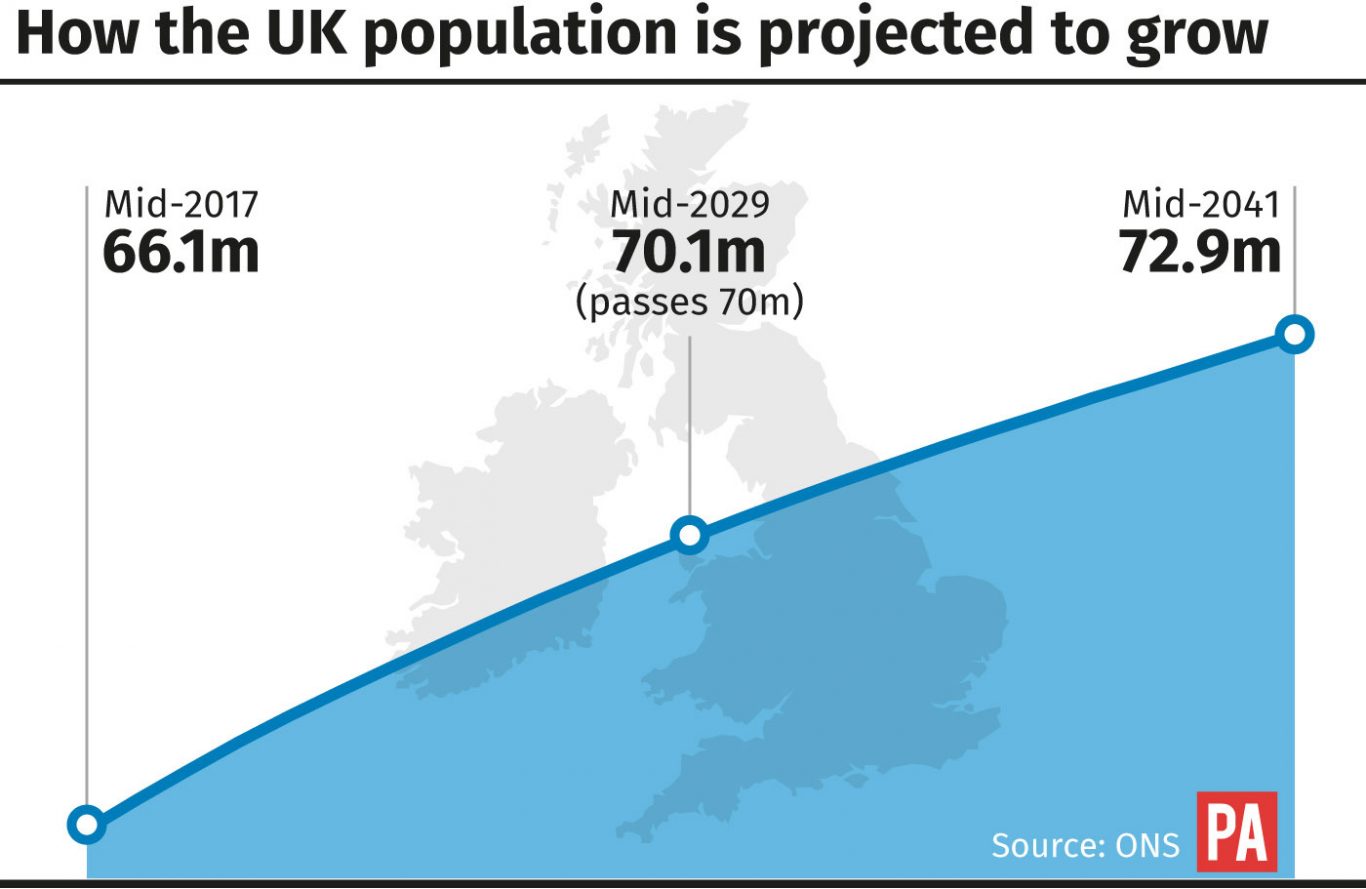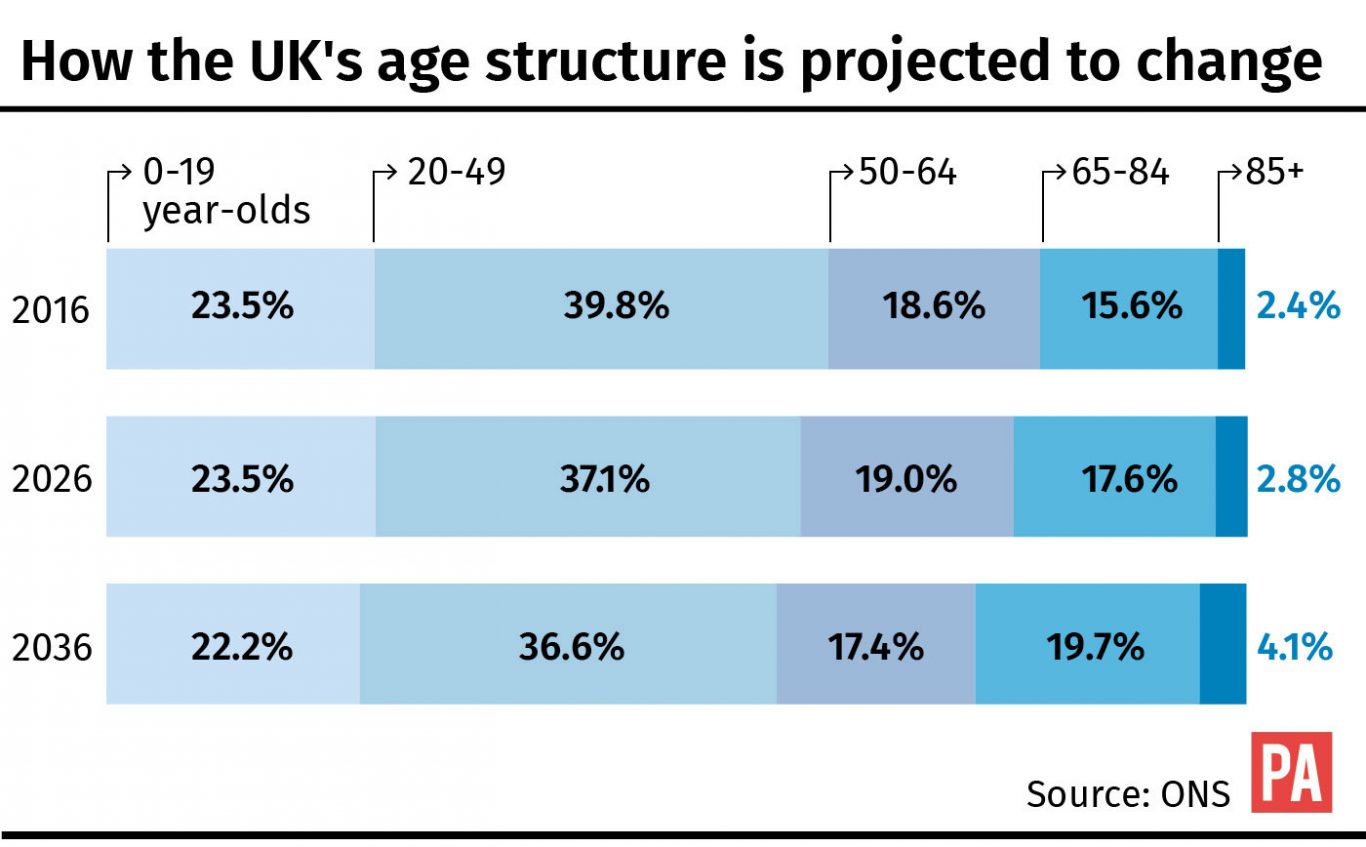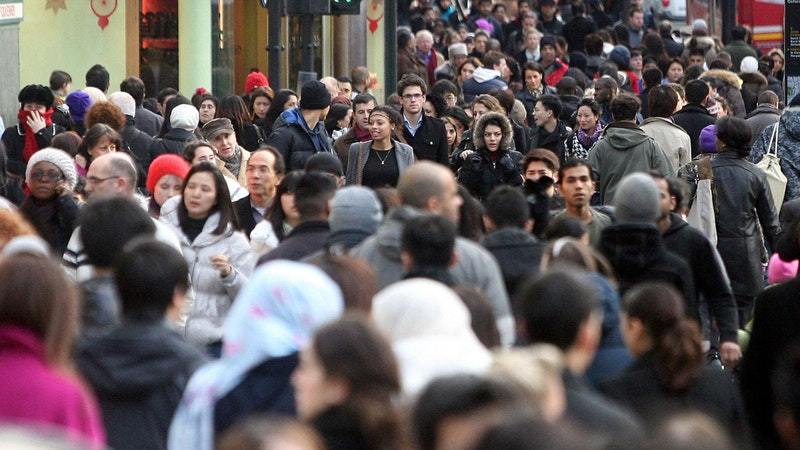The UK population is set to pass the 70 million mark before the end of the next decade, according to official statistics.
Demographers project that the milestone will be reached by the middle of 2029 as the number of occupants increases from an estimated 65.6million last year.
More than three quarters of the projected increase over 25 years will be either directly or indirectly linked to international migration, the report suggests.

From 2016 to 2041, the population is projected to grow by 7.3 million – around the equivalent of the current populations of Scotland and Northern Ireland combined.
But statisticians expect the pace of growth to slow because of “lower assumptions” about future levels of fertility and international migration, as well as a slower rate of increase in life expectancy.
The projections – published by the Office for National Statistics (ONS) every two years – suggest that the number of people living in the UK will rise by by 3.6 million, or 5.5%, over the next 10 years, reaching 69.2million in mid-2026.
More than half (54%) of the projected growth over the decade is attributed to net international migration, with the remaining 46% resulting from more births than deaths.

The ONS report notes that international migration also has an indirect impact on the population.
For example, women coming to the UK who subsequently have children will increase the numbers of births. Conversely, those emigrating before they have children will decrease the number of births.
The study says: “Once the indirect effect is taken into account, international migration accounts for 77% of the projected UK population growth between mid-2016 and mid-2041.
“Because migrants are concentrated at young adult ages, the impact of migration on the projected number of women of childbearing age is especially important over this period.”
Andrew Nash from our Population Projections Unit comments on the latest statistics out today: https://t.co/IBAA6rGVc6 pic.twitter.com/qs414ek1O8
— ONS (@ONS) October 26, 2017
The total projected increase in the number of residents in the UK over the next 25 years is lower than that over the previous quarter of a century, the report notes.
Between mid-1991 and mid-2016 the population grew by 8.2 million (14.3%) while between mid-2016 and mid-2041 it is projected to grow by 7.3 million (11.1%).
Andrew Nash, of the ONS Population Projections Unit, said: “These projections suggest slower growth than the previous (2014-based) projections.
“This is because of lower assumptions about future levels of fertility and international migration, and an assumption of a slower rate of increase in life expectancy.”
Over the decade from mid-2016 projected growth varies substantially between the four nations of the UK.
Growing number of older people – compare UK population in mid-2016 with projections for 2041 https://t.co/OhjBu366u7 pic.twitter.com/EPumlLNH0x
— ONS (@ONS) October 26, 2017
England’s population is projected to grow 5.9%, for Northern Ireland the figure is 4.2% while for Scotland and Wales the percentages are 3.2% and 3.1% respectively.
The report also reveals that the rise in the number of inhabitants in the UK is tracking at well above the EU average, and at the fastest rate among the four largest nations in the bloc.
Projected UK growth of 16% between 2015 and 2040 compares to 10% for France and 4% for Germany, while Italy’s population is projected to see a slight decline.
The study gives a fresh indication of the ageing nature of the population. In mid-2016 there were 1.6 million people aged 85 and over – by mid-2041 this is projected to double to 3.2 million.
The ONS emphasised that the projections do not attempt to predict the impact of the UK leaving the EU.






